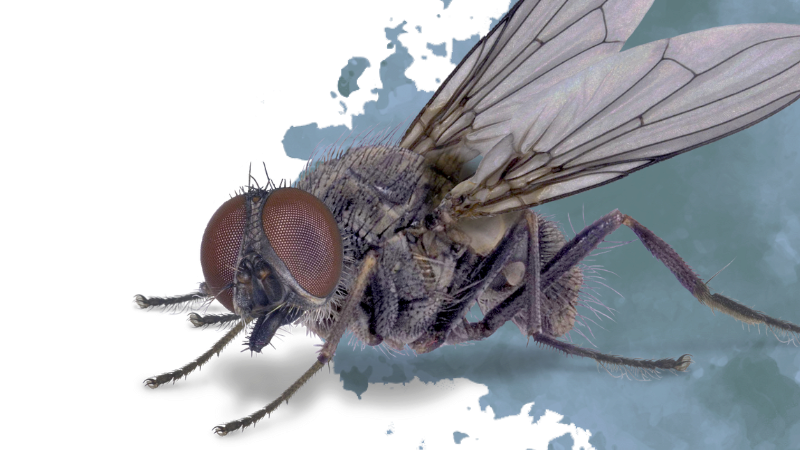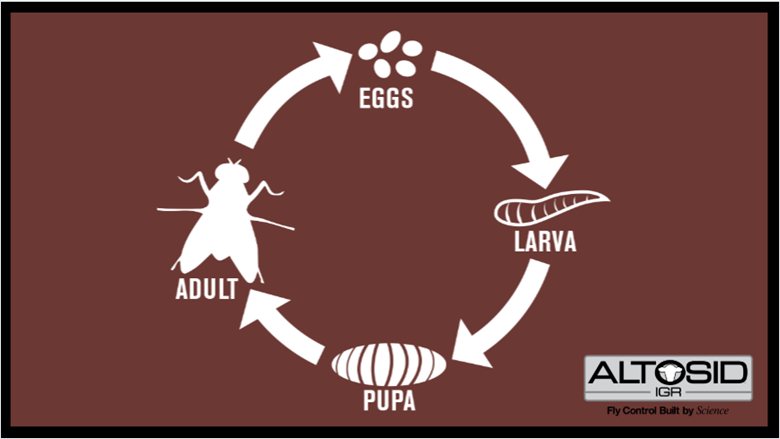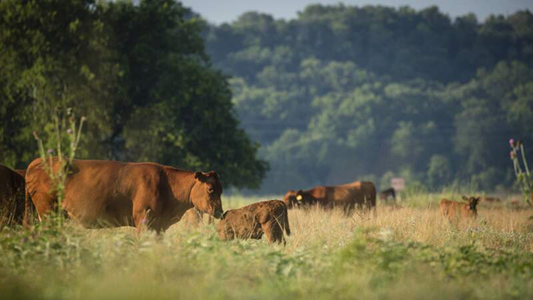
Did you know that the horn fly is one of the most economically damaging pests of pasture cattle in the United States? Horn flies cost cattle producers approximately $1 billion every year. But how can you fix this problem if you don't even know what to look for?
To better help you identify and control horn fly infestations on your operation, we put together this informational blog to keep your cattle comfortable and your profits high.
What is a Horn Fly?
Horn flies are small biting flies with piercing-type mouthparts, which take up to 40 blood meals per day. They are grayish with two stripes on their thorax and are usually found congregating on the backs of cattle.
Horn flies typically only leave the backs of cattle to briefly lay their eggs in fresh manure. These eggs are a reddish-brown color that hatch and feed in the manure and pupate underneath or in the surrounding soil around the manure. After the pupae molt into adults, the horn flies emerge as tiny, black insects and live anywhere from 2 to 4 weeks.
Signs of Horn Fly Infestations
- Flies on the backs of cattle
- Twitching
- Tail swishing
Although the total life span of the horn fly is slightly longer than one month, their populations expand quickly, causing infestations. When left untreated, fly infestations can rapidly increase to over 4,000 flies per animal, leading to increased cattle stress and annoyance. This can cause cattle to burn excess energy to combat the flies, interrupt grazing patterns, and cause cattle grouping. The result of horn fly infestations exceeding the economic threshold results in reduced weight gains, decreased milk production, and reduced calf weaning weights.
Disease from Horn Flies
Horn flies tend to feed on the blood vessels in the skin of the cattle's teat, causing irritation. When horn flies carry mastitis-causing bacteria, it enters the teat orifice and moves upward in the quarter, destroying milk-producing tissues. As the flies go from animal to animal, the disease can quickly spread throughout the herd. Infections not only impact current cattle productivity, but they can also impact long-term herd profitability.
How Can Altosid® IGR Help?
Once you have identified the flies around your herd, the next step is to act upon your knowledge. Given the role horn flies play in cow health and conception, implementing proper practices and preventative fly control strategies is key to protecting your herd and profit from horn flies.
The easiest way to control horn flies is to use an insect growth regulator (IGR), like Altosid® IGR, which allows you to add horn fly control in your feed or minerals, letting cattle do the work. Altosid® IGR breaks the horn fly life cycle, preventing pupae from developing into biting adult flies.


